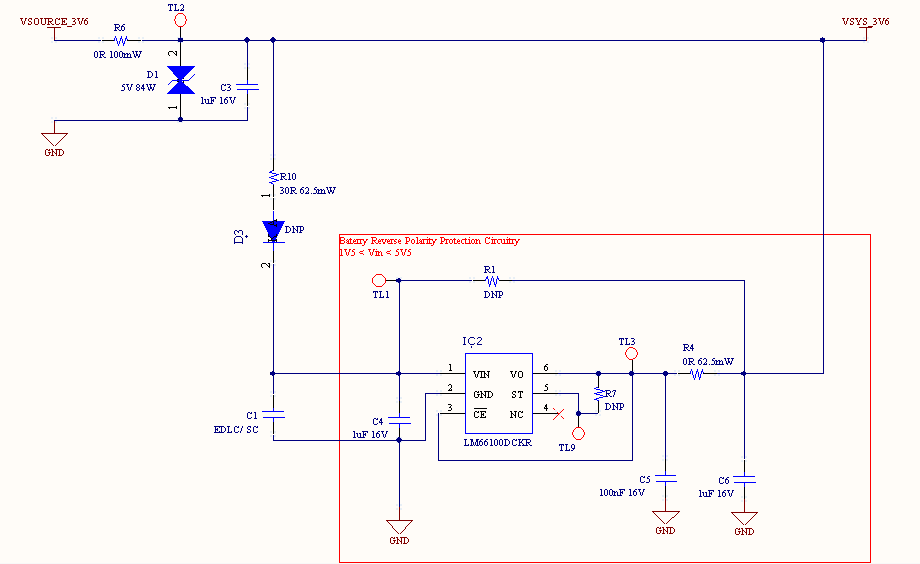Hi,
Please help to advise on the application LM66100 use as diode oring.
We are wonder that whether it is able to use LM66100 as diode oring for the below scenario:
(1)2 power sources with same voltage level and one sharing load; The load current have to sharing with this 2 power source at the same time (50% 50% or etc) along the period.
Below the example from datasheet.
If I am understand correctly, the diode oring below application is switching in between 1st and 2nd power sources when the either Vin1 – Vin2 > Vce threshold (80mV) or Vin2 – Vin1 > Vce threshold (80nV) condition are met.
Our question is, If the switching frequency between source 1 and sources 2 is normal and acceptable and what’s the output filter cap value should have for say the load current max 800mA for not being interrupted.
Also is there any better way and idea design application use LM66100 for this scenario (not always switching) due to same voltage level power input sources.
(2)1 power sources with backup supercap and one sharing load; The load current is only sharing with this backup supercap at the event when there is a burst which main power sources not able to sustain for a short duration:
After the short burst duration the supercap will be charge back by main power source with the same voltage level at the end.
The same question also about the how LM66100 diode oring to differentiate when there is the needed and burst require only especially both have the power source and backup supercap have the same voltage level.




